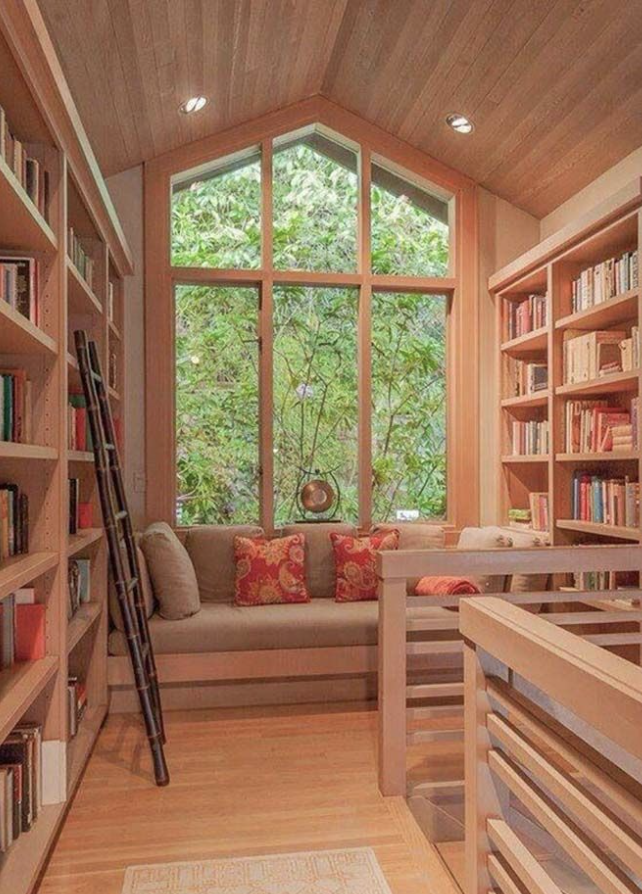How Space Shapes Behavior.
To kick things off, let's take a moment to think about the places we visit regularly. Whether it's your workplace, your home, or even your favorite coffee shop, the architecture of these spaces plays a significant role in shaping the way we think, feel, and interact with others. That's the reason a coffee shop is a coffee shop and a library is a library. Have you ever noticed how the layout of your office influences your productivity? Perhaps you've experienced a sense of calm in a well-designed meditation room, or maybe you've felt more social in an open and inviting cafe. These are all examples of how architecture can shape our behaviors.
Let's start by talking about the concept of spatial psychology. This field of study examines how our environment affects our emotions, thoughts, and actions. Architects and designers draw upon this knowledge to create spaces that serve specific purposes. For instance, the layout of a library, with its quiet corners and rows of books, encourages focused, solitary study. In contrast, a vibrant and open coworking space might foster collaboration and creativity among its occupants.
Another fascinating aspect of architectural influence is the impact of lighting. Natural light, for example, is known to boost mood and productivity. Think about how your mood changes when you're in a well-lit, sun-drenched room compared to a dimly lit basement.
Additionally, the choice of materials and colors in a building can evoke various emotions. A hospital may use soothing pastel colors to create a calming atmosphere, while a vibrant restaurant might opt for bold and energetic hues to stimulate appetite and conversation.
Japanese cafe
It's not just the aesthetics; the physical layout of a space can also influence behavior. Take the example of the famous architect, Christopher Alexander, who developed the concept of the "Pattern Language." This idea suggests that the arrangement of spaces, furniture, and elements within a building should be intuitive and functional, promoting comfortable and purposeful interactions. A well-designed public park, with its strategically placed benches and pathways, can encourage people to gather, socialize, and engage in physical activities. This, in turn, fosters a sense of community and well-being.Consider the Pantheon in Rome, a breathtaking architectural marvel dating back to ancient Rome. Its soaring dome, with an oculus that lets in a beam of sunlight, creates a sense of awe and reverence. Visitors instinctively speak in hushed tones, reinforcing the solemn atmosphere.
This design choice consciously or unconsciously encourages respect and contemplation, showing how architecture can shape our behavior by creating a specific emotional response.
Moving beyond individual buildings, urban planning plays a pivotal role in shaping how we interact with our surroundings and each other.Take urban parks, for instance. Cities that prioritize green spaces like Central Park in New York City foster social interactions. The design includes benches, open spaces, and recreational areas, encouraging people to gather, exercise, and socialize. By providing a space for communal activities, urban planners can influence social behavior, promoting a sense of community and well-being. Tech giants like Google have reimagined the traditional office space. Their campuses feature open floor plans, colorful designs, and communal areas. This architecture promotes collaboration, creativity, and a sense of belonging among employees.The design of workspaces can boost productivity by fostering a culture of innovation and teamwork.
Now, let's discuss the role of architecture in promoting sustainability and eco-conscious behaviors. Sustainable design principles can influence our choices as occupants. Buildings with energy-efficient features, like solar panels or natural ventilation systems, encourage us to be more mindful of our environmental impact.The Bullitt Center in Seattle is a remarkable example of sustainable architecture. It uses renewable energy, collects rainwater, and promotes energy-efficient practices. Its design challenges occupants to adopt eco-conscious behaviors. This building not only reduces its carbon footprint but also encourages its occupants to adopt greener habits, from recycling to reducing energy consumption.
Think about it; when you walk into a LEED-certified building or a home with smart energy-saving technology, you're more likely to turn off lights when not in use, conserve water, and make eco-friendly choices.
Finally, let's delve into the psychological comfort and security that architecture can provide. Well-designed spaces can make us feel safe, relaxed, and at ease. A cozy, well-lit bedroom can promote restful sleep, while a well-organized kitchen can encourage healthier eating habits. Even in public spaces, consider how thoughtful design elements like visible exits, emergency signage, and well-placed seating can enhance our sense of security, reducing stress and promoting a sense of well-being.
In conclusion, it's clear that architecture is not just about aesthetics or functionality; it's a powerful force that shapes our behaviors, emotions, and interactions. From our workplaces to our homes, the design of our built environment has a profound impact on our lives. So, next time you step into a new space, take a moment to appreciate how the architecture is influencing your thoughts, feelings, and actions. It's a reminder that our surroundings are not just passive backgrounds but active participants in shaping who we are and how we behave.


